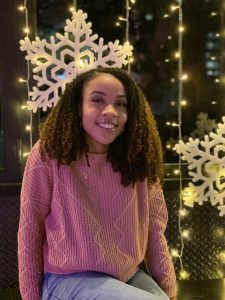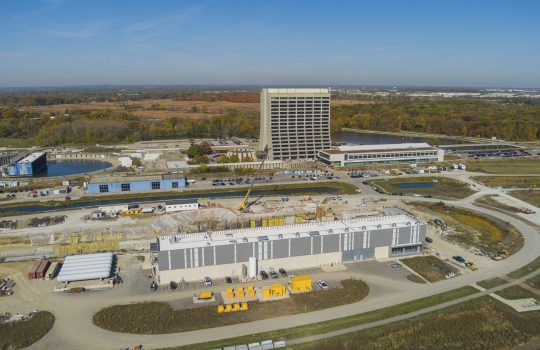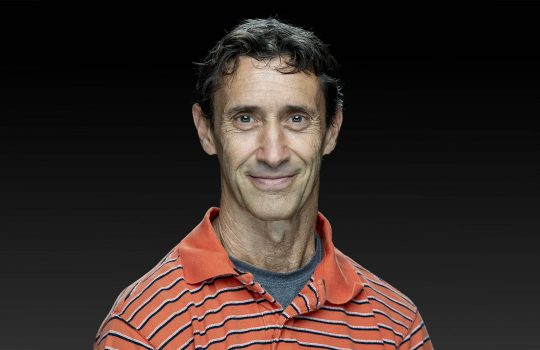How long have you been at the U.S. Department of Energy’s Fermi National Accelerator Laboratory?
I’ve been at Fermilab for almost seven months. I actually interned at Fermilab for two summers previously. I did an internship through the GEM Fellowship and got paired with Fermilab as my industry sponsor and worked here for three months each summer.
Did your internships make you want to come back to the lab?
I just really enjoyed working with the people here at Fermilab. The group I worked with previously was the Muon g-2 group, and my mentor/supervisor was really awesome. I loved working with her; we had similar backgrounds. She’s Afro Latina, and I’m African American. You know, being a woman in STEM and having that connection, it was great.
The people I worked with outside of her were also really nice and welcoming, so I realized I could see myself working here. Once I graduated, my supervisor reached out and asked, “Hey, are you thinking about working for the lab?” I said that I would love to, so when she proposed the idea, I was more than ready to say yes.
Do you feel like getting to work with another Black woman in STEM made a big difference to your decision, given the field?
I understood with picking engineering that there won’t be a lot of women or Black people in the field. I had come to terms and reconciled with that fact. But having her as my direct supervisor and having her to work with was great. I didn’t expect it, so having that opportunity and seeing that she wasn’t alone was very nice. I mean, there’s still room for improvement. We could still have more women and Black people in STEM, but having her there definitely helped me to feel more comfortable working at Fermilab.
What do you do for the lab?
Right now, I’m working on the PIP-II project. I’m working with the building infrastructure group, designing mechanical fluid systems. It wasn’t a field I thought I would be in. I did well in my fluids’ classes, but it wasn’t the number one thing I wanted to work on. But now that I have the opportunity to be a mechanical engineer and to see the different areas I could work in as a mechanical engineer, it’s a great opportunity.
What do you enjoy most about your work?
I work with a couple of different groups at the moment, so I like that I have so much autonomy. Right now, I am working with building infrastructure. But my supervisor has also offered me the opportunity to work with the cryo group, and cryogenics is something I have not had much experience in. It’s also something that not too many people get the opportunity to work in because it’s very specialized.
I like being able to work with so many different groups and seeing their different perspectives and the work they get to do; I’m gaining some of that experience and that knowledge. Everyone on PIP-II is so experienced compared to me, so it’s nice to see the knowledge and skills that they’ve acquired. It’s really inspiring.
What do you find most rewarding about your work?
Working with so many people advanced in their careers, it’s nice to see they love what they do. Being able to see how passionate they are about their work and how dedicated they are, it’s just inspiring because that’ll be me one day.
On the flip side, I’ve had the opportunity to work with some of the other PIP-II members on this fellowship we’re getting started called the ASPIRE Fellowship. It’s a fellowship trying to get more underrepresented minorities working on the PIP-II project. We’re targeting upper-level undergraduate students and graduate-level students. I love the fact that we’re targeting underrepresented minorities like women, Black, Latinx, and Indigenous students in STEM.
They asked me if I could help with the outreach, given that I was a recent graduate, and the students could connect with me more. As we’ve gone on, they want me to have a larger role, helping out with deciding who we want to bring on as a part of the first cohort of students this upcoming summer. I just love that I have that opportunity to get more people who look like me working — younger people starting out in their careers. I didn’t think I was going be able to influence something like that and be a part of developing a fellowship this early in my career. So being able to do the outreach work and connecting with students, it’s really rewarding.
What do you look forward to in your routine?
I would say it’s probably getting to walk my dog at lunchtime. His name is Buddy, and he’s a West Highland Terrier, a small little white dog. He’s my joy, I just love him. Working from home gives me the opportunity to walk him in the afternoons.
What do you do for fun?
I try to go and work out. Right now, in the winter, it’s kind of difficult to do that. But I love running. I picked that up late in my undergrad. In the summertime, I’m always on the lakefront, running as far as I can. I’ve even started doing some races here in Chicago because there’s always some kind of 5K or 10K going on. I did the Hot Chocolate 15K back in November. That’s what I do for fun, outside of Netflix.
Fermi National Accelerator Laboratory is supported by the Office of Science of the U.S. Department of Energy. The Office of Science is the single largest supporter of basic research in the physical sciences in the United States and is working to address some of the most pressing challenges of our time. For more information, please visit science.energy.gov.




